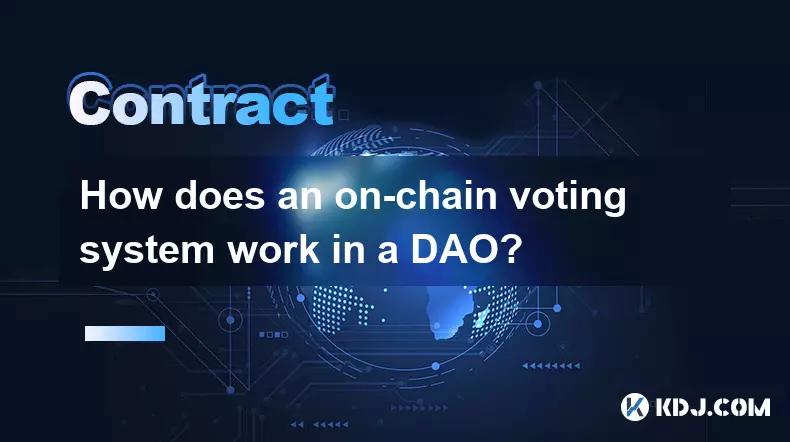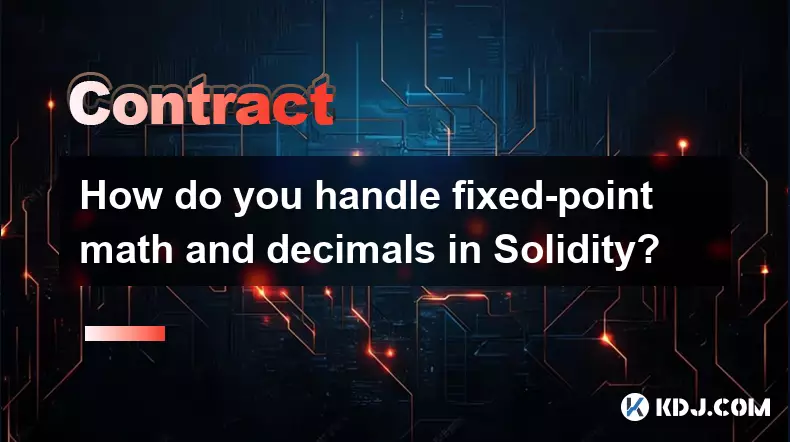-
 bitcoin
bitcoin $101752.865364 USD
-1.09% -
 ethereum
ethereum $3382.985899 USD
-1.38% -
 tether
tether $0.999658 USD
0.04% -
 xrp
xrp $2.272505 USD
-1.51% -
 bnb
bnb $989.089004 USD
0.14% -
 solana
solana $156.962612 USD
-3.08% -
 usd-coin
usd-coin $0.999776 USD
0.01% -
 tron
tron $0.290786 USD
-0.69% -
 dogecoin
dogecoin $0.174594 USD
-2.86% -
 cardano
cardano $0.560085 USD
-3.55% -
 hyperliquid
hyperliquid $40.023704 USD
-5.75% -
 chainlink
chainlink $15.324649 USD
-2.78% -
 bitcoin-cash
bitcoin-cash $493.576540 USD
-3.52% -
 zcash
zcash $571.320038 USD
-12.05% -
 stellar
stellar $0.280066 USD
-4.26%
Grid Trading Bot Strategy: Automating Your Profits on Binance Futures.
Grid trading on Binance Futures automates buy-low, sell-high strategies within a set price range, profiting from volatility while leveraging funding rate differentials—ideal for sideways markets but risky in strong trends.
Nov 02, 2025 at 05:18 pm

Understanding Grid Trading in the Context of Binance Futures
1. Grid trading is a systematic approach that leverages price volatility within a predefined range. Instead of predicting market direction, this strategy places buy and sell orders at evenly spaced intervals, forming a 'grid' of potential trades. On Binance Futures, traders can apply this method to perpetual and quarterly contracts, allowing them to benefit from both upward and downward movements.
2. The core principle involves setting upper and lower price boundaries based on historical volatility and support/resistance levels. Within these bounds, the bot automatically executes limit orders—buying low and selling high—as the price fluctuates across grid levels. This makes it especially effective in sideways or ranging markets where traditional trend-following strategies may underperform.
3. Leverage plays a crucial role when deploying grid bots on futures contracts. Since Binance Futures allows users to trade with leverage, even small price swings can generate significant returns relative to the margin used. However, improper leverage settings increase liquidation risk, especially during strong trending moves that break out of the established grid range.
4. One major advantage of using a grid bot on futures is the ability to earn funding rate positive carry. In certain market conditions, holding long positions during periods of negative funding rates—or short positions when rates are positive—can result in consistent income as other traders pay the funding fee. A well-configured bot can optimize for these opportunities while maintaining its core grid logic.
Key Parameters for Optimizing Your Grid Bot Setup
1. Defining the correct price range is essential for sustained profitability. Traders must analyze recent price action, identify key technical levels, and avoid placing grids too wide or too narrow. An overly broad range results in fewer trades and reduced capital efficiency, while an overly tight grid may trigger excessive order frequency without meaningful profit per trade.
2. The number of grid lines determines how many entry and exit points exist within the range. More grids mean more frequent trades but smaller individual profits. Fewer grids lead to larger gains per transaction but require bigger price swings to activate. Balancing this parameter depends on asset volatility and desired trade frequency.
3. Position size per grid level should be calculated based on total allocated capital and risk tolerance. Over-committing funds to each level increases exposure and the chance of early margin depletion. Using a percentage-based allocation ensures consistent risk distribution across all layers of the grid.
4. Take-profit and stop-loss mechanisms need careful configuration. While grid bots inherently take profit through successive sales, adding a global stop-loss helps prevent catastrophic losses during unexpected black swan events. Some advanced bots allow dynamic adjustment of grid parameters based on real-time volatility indicators like Bollinger Bands or ATR.
Risks and Limitations of Futures Grid Strategies
1. Trending markets pose one of the greatest challenges to grid bots. When prices move strongly in one direction beyond the set boundaries, the bot stops executing new trades and may leave open positions exposed. Without proper safeguards, such scenarios can lead to substantial unrealized losses or even liquidation.
2. Funding fees can erode profits if not monitored closely. Holding positions over extended periods incurs recurring costs every eight hours. In highly volatile markets with shifting sentiment, prolonged exposure can turn what appears to be a profitable grid into a net loss due to accumulated funding payments.
3. Over-optimization based on past data often leads to poor performance in live trading. Historical backtests might show impressive returns, but they don't account for slippage, network latency, or sudden changes in market structure. Real-world execution requires conservative assumptions and stress-testing under various market regimes.
4. Capital efficiency becomes a concern when deploying multiple bots across different pairs. Each grid locks up margin, reducing flexibility to respond to new opportunities. Monitoring overall portfolio exposure and ensuring sufficient buffer funds are critical for sustainable operation.
Frequently Asked Questions
What happens if the price breaks out of the grid range?If the price moves beyond the upper or lower boundary, the bot will no longer place new orders. Any open positions remain active until manually closed or automatically managed by integrated stop-loss rules. Some bots offer breakout modes that shift the entire grid or reverse position direction once thresholds are breached.
Can I run a grid bot on multiple cryptocurrency pairs simultaneously?Yes, most modern trading platforms and third-party bot services support multi-pair deployment. However, managing several grids demands increased monitoring and capital allocation discipline. Correlated assets like BTC and ETH may experience synchronized moves, amplifying directional risk if not diversified properly.
How do I calculate expected returns from a futures grid bot?Expected returns depend on grid density, price movement frequency within the range, leverage used, and funding rate differentials. Traders can estimate earnings by simulating historical price traversals across the grid and factoring in realized gains per cycle, minus fees and funding costs. Actual results vary with market dynamics.
Disclaimer:info@kdj.com
The information provided is not trading advice. kdj.com does not assume any responsibility for any investments made based on the information provided in this article. Cryptocurrencies are highly volatile and it is highly recommended that you invest with caution after thorough research!
If you believe that the content used on this website infringes your copyright, please contact us immediately (info@kdj.com) and we will delete it promptly.
- Ripple (XRP) in 2026: Hold or Fold? A Look at XRP's Future and Emerging DeFi Alternatives
- 2025-11-08 18:35:01
- Zcash ZEC Coin Price Explosion: From Privacy Niche to Center Stage
- 2025-11-08 18:55:01
- Berachain Price Prediction: Navigating the Honeycomb Hype in Crypto
- 2025-11-08 18:55:01
- Arthur Hayes, Gold, and Bitcoin: A Modern Monetary Trinity?
- 2025-11-08 19:15:01
- Shiba Inu's Next Move: Navigating a Shifting Market
- 2025-11-08 19:20:01
- Pakistan's Crypto Crossroads: Balancing Opportunity with Asset-Backed Realities
- 2025-11-08 19:20:01
Related knowledge

How do you safely send Ether to another contract?
Nov 09,2025 at 06:40pm
Sending Ether to Smart Contracts: Key Considerations1. Verify that the receiving contract has a payable fallback function or a designated payable func...

What is a state machine and how can a contract be designed as one?
Nov 08,2025 at 02:19pm
Understanding State Machines in Blockchain Context1. A state machine is a computational model used to design systems that transition between defined s...

How does a bonding curve work and how is it used for token sales?
Nov 09,2025 at 04:00pm
Understanding the Mechanics of Bonding Curves1. A bonding curve is a mathematical function that links the price of a token to its supply. As more toke...

How do you upgrade a smart contract using the UUPS proxy pattern?
Nov 09,2025 at 01:19am
Understanding the UUPS Proxy Pattern in Smart Contract DevelopmentThe UUPS (Universal Upgradeable Proxy Standard) pattern has become a cornerstone in ...

How does an on-chain voting system work in a DAO?
Nov 09,2025 at 04:20pm
Understanding On-Chain Voting in DAOs1. An on-chain voting system operates directly on a blockchain network, allowing token holders to cast votes that...

How do you handle fixed-point math and decimals in Solidity?
Nov 08,2025 at 11:40pm
Understanding Fixed-Point Arithmetic in Solidity1. Solidity does not natively support floating-point numbers, which means developers must rely on fixe...

How do you safely send Ether to another contract?
Nov 09,2025 at 06:40pm
Sending Ether to Smart Contracts: Key Considerations1. Verify that the receiving contract has a payable fallback function or a designated payable func...

What is a state machine and how can a contract be designed as one?
Nov 08,2025 at 02:19pm
Understanding State Machines in Blockchain Context1. A state machine is a computational model used to design systems that transition between defined s...

How does a bonding curve work and how is it used for token sales?
Nov 09,2025 at 04:00pm
Understanding the Mechanics of Bonding Curves1. A bonding curve is a mathematical function that links the price of a token to its supply. As more toke...

How do you upgrade a smart contract using the UUPS proxy pattern?
Nov 09,2025 at 01:19am
Understanding the UUPS Proxy Pattern in Smart Contract DevelopmentThe UUPS (Universal Upgradeable Proxy Standard) pattern has become a cornerstone in ...

How does an on-chain voting system work in a DAO?
Nov 09,2025 at 04:20pm
Understanding On-Chain Voting in DAOs1. An on-chain voting system operates directly on a blockchain network, allowing token holders to cast votes that...

How do you handle fixed-point math and decimals in Solidity?
Nov 08,2025 at 11:40pm
Understanding Fixed-Point Arithmetic in Solidity1. Solidity does not natively support floating-point numbers, which means developers must rely on fixe...
See all articles





















![The Graph Price Prediction [GRT Crypto Price News Today] The Graph Price Prediction [GRT Crypto Price News Today]](/uploads/2025/11/07/cryptocurrencies-news/videos/690d4df44fe69_image_500_375.webp)




















































